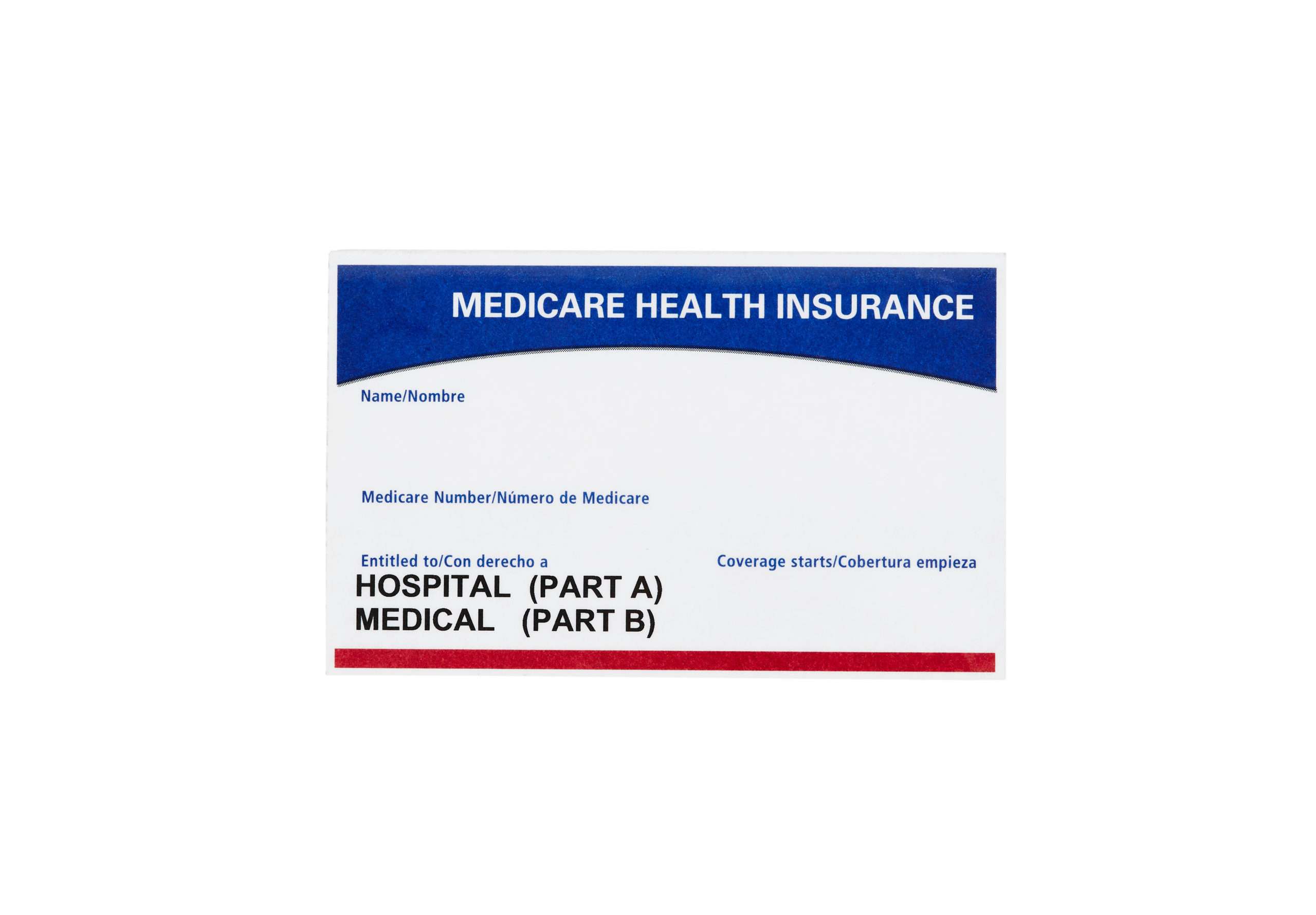Medicare Advantage vs. Medicare Supplement (Medigap)

Introduction
Medicare is a federal health insurance program for people who are 65 or older, as well as certain younger individuals with disabilities. While Medicare covers a significant portion of medical expenses, there are still out-of-pocket costs that beneficiaries are responsible for. That’s where Medicare Advantage and Medicare Supplement (Medigap) plans come in.
Medicare Advantage plans, also known as Medicare Part C, are offered by private insurance companies approved by Medicare. These plans combine the coverage of Original Medicare (Parts A and B) into one comprehensive plan. In addition to the coverage provided by Original Medicare, Medicare Advantage plans often include prescription drug coverage (Part D) and extra benefits like dental, vision, and hearing services. Medicare Advantage plans have a specific service area, and beneficiaries must use healthcare providers within the plan’s network.
On the other hand, Medigap plans are designed to supplement Original Medicare. These plans are offered by private insurance companies and help cover the out-of-pocket costs that Medicare doesn’t pay, such as deductibles, coinsurance, and copayments. Medigap plans work alongside Original Medicare and can be used with any healthcare provider that accepts Medicare. Unlike Medicare Advantage plans, Medigap plans do not include prescription drug coverage, so beneficiaries may need to purchase a separate Part D plan. With 10 standardized Medigap plan types available in most states, it’s important to research and compare the best Medicare supplement insurance companies for 2024 to find the right coverage for your needs.
Comparing Medicare Advantage and Medicare Supplement (Medigap) Plans
When it comes to choosing between Medicare Advantage and Medigap plans, there are a few key factors to consider. Medicare Advantage plans are offered by private insurance companies, and the benefits and costs of these plans can vary. On the other hand, Medigap policies are standardized and offered by different insurance companies. Medigap plans help fill the gaps in Original Medicare coverage and provide additional financial protection.
Understanding Medicare Advantage: Pros and Cons
Medicare Advantage plans offer several advantages, including additional coverage beyond what Original Medicare provides. Here are some pros and cons to consider:
Pros:
- Medicare Advantage plans often include prescription drug coverage, which can be convenient for beneficiaries who require regular medications.
- These plans may offer additional benefits like dental, vision, and hearing services, which are not covered by Original Medicare.
- Medicare Advantage plans may have lower out-of-pocket costs compared to Original Medicare, making healthcare more affordable for some individuals.
- Variety of plan options available such as HMOs, PPOS, Special Needs plans to fit individual needs.
Cons:
- Medicare Advantage plans have networks of healthcare providers, and beneficiaries must use in-network providers to receive full coverage.
- There may be limitations on coverage for certain services or treatments, depending on the specific plan.
- Beneficiaries may need to obtain referrals from a primary care physician to see specialists, adding an extra step to accessing certain healthcare services.
Exploring Medicare Supplement (Medigap): Benefits and Limitations
Medigap plans offer several benefits and limitations that beneficiaries should consider:
Benefits:
- Medigap plans provide additional financial protection by covering some or all of the out-of-pocket costs that Original Medicare doesn’t pay, such as deductibles, coinsurance, and copayments.
- Beneficiaries with Medigap plans have the freedom to see any healthcare provider that accepts Medicare, without worrying about network restrictions.
- Medigap plans provide predictable healthcare costs, as beneficiaries know exactly what their out-of-pocket expenses will be.
- No prior authorizations or referrals
Limitations:
- Medigap plans do not cover prescription drugs, so beneficiaries may need to purchase a separate Part D plan for medication coverage.
- Medigap plans come with a monthly premium, in addition to the premium paid for Part B coverage.
- Not all Medigap plans are available in every state, and the availability of specific plans may vary.
Key Differences Between Medicare Advantage and Medicare Supplement
The key differences between Medicare Advantage and Medigap plans lie in the different types of coverage they provide and how they work with Original Medicare. Medicare Advantage plans offer comprehensive coverage that combines Parts A and B of Medicare, along with additional benefits like prescription drugs, dental, vision, and hearing services. Medigap plans, on the other hand, fill the gaps in Original Medicare coverage and provide additional financial protection. Medigap plans do not include prescription drug coverage, and beneficiaries may need to purchase a separate Part D plan.
Coverage Scope: What Each Plan Offers
Original Medicare provides coverage for hospital stays (Part A) and medical services (Part B), but it does not cover all expenses. Medicare Advantage plans offer additional coverage beyond what Original Medicare provides, including prescription drugs, dental, vision, and hearing services. Medigap policies, on the other hand, help fill the gaps in Original Medicare coverage and provide additional financial protection. Medigap plans cover expenses such as deductibles, coinsurance, and copayments, which are not covered by Original Medicare.
Out-of-Pocket Costs Compared
When considering Medicare Advantage and Medigap plans, it’s important to understand the out-of-pocket costs associated with each. Medicare Advantage plans may have lower monthly premiums compared to Medigap plans, but they often require copayments or coinsurance for healthcare services. Medigap plans, on the other hand, typically have higher monthly premiums but offer more predictable out-of-pocket costs, including the Part B premium. Here is a comparison of the out-of-pocket costs for Medicare Advantage and Medigap plans:
|
Plan Type |
Monthly Premiums |
Medicare Part B Deductible |
Out-of-Pocket Costs |
|
Medicare Advantage |
Low to None |
Varies |
Copayments or Coinsurance – Pay as you go |
|
Medigap |
Higher |
Varies |
Little to no co-pays – Front loaded. |
Choice of Healthcare Providers: Flexibility and Restrictions
One of the key differences between Medicare Advantage and Medigap plans is the choice of healthcare providers. Medicare Advantage plans have a specific service area, and beneficiaries must use in-network providers to receive full coverage. This can be limiting, especially for individuals who travel frequently or have specialized healthcare needs. Medigap plans, on the other hand, allow beneficiaries to see any healthcare provider that accepts Medicare. This provides more flexibility and freedom in choosing healthcare providers. However, it’s important to note that Medigap plans are offered by different insurance companies, so beneficiaries should consider the reputation and network of providers offered by each company.
Who Should Consider Medicare Advantage?
Medicare Advantage plans may be a good option for individuals who value additional benefits beyond what Original Medicare provides. These plans are offered by private insurance companies and often include prescription drug coverage, dental, vision, and hearing services. Also it may be a good option for individuals who want a low cost option. Medicare Advantage plans have a specific service area, so individuals who reside in the service area and prefer the convenience of one comprehensive plan may find Medicare Advantage beneficial. It’s important to review the specific benefits, costs, and network restrictions of each Medicare Advantage plan offered by private insurance companies.
Ideal Candidates for Medicare Advantage Plans
Medicare Advantage plans may be ideal for individuals who prioritize additional benefits like prescription drug coverage, dental, vision, and hearing services. These plans often include wellness programs and preventive care services that can help beneficiaries stay healthy. Individuals who have specific healthcare needs, such as regular prescriptions or ongoing dental or vision care, may find Medicare Advantage plans appealing. It’s important to review the specific benefits and costs of each Medicare Advantage plan to ensure it meets individual healthcare needs.
How to Enroll in a Medicare Advantage Plan
Enrolling in a Medicare Advantage plan is relatively straightforward. The first step is to ensure that you are eligible for Medicare Part A and Part B. Medicare Advantage plans have specific enrollment periods, including the Initial Enrollment Period when you first become eligible for Medicare and the Annual Enrollment Period that occurs each year from October 15 to December 7. During these enrollment periods, you can compare and choose a Medicare Advantage plan that suits your needs. It’s also helpful to consult with a licensed insurance agent who can provide guidance and assist with the enrollment process. Reach out today at www.zingasinsurance.com
Who Should Opt for Medicare Supplement?
Medicare Supplement plans, also known as Medigap, may be a good option for individuals who prioritize financial protection and want to fill the gaps in Original Medicare coverage. These plans are standardized and offered by different insurance companies, allowing beneficiaries to choose the plan that best meets their needs. Medigap plans help cover expenses such as deductibles, coinsurance, and copayments, providing additional financial security. Individuals who want the freedom to see any healthcare provider that accepts Medicare and are willing to pay a higher monthly premium may find Medigap plans beneficial.
Ideal Candidates for Medicare Supplement Plans
Medicare Supplement plans may be ideal for individuals who value financial protection and want to have predictable healthcare costs. These plans are particularly beneficial for individuals who anticipate frequent medical services or have ongoing healthcare needs. Individuals who prefer the freedom to choose any healthcare provider that accepts Medicare and are willing to pay a higher monthly premium may find Medigap plans appealing. It’s important to review the specific benefits and costs of each Medigap plan offered by different insurance companies, such as Mutual of Omaha, to determine which plan best suits individual healthcare needs.
Steps to Acquire a Medicare Supplement Plan
Acquiring a Medicare Supplement plan, or Medigap, involves a few key steps. First, ensure that you are eligible for Medicare Part A and Part B. Medigap plans have an initial enrollment period that starts when you turn 65 and are enrolled in Part B. During this period, you have guaranteed-issue rights, meaning insurance companies must offer you a Medigap policy and cannot deny you coverage. It’s important to compare different Medigap plans offered by different insurance companies, such as Medicare Supplement Plan G, as the costs can vary. Consulting with a licensed insurance agent can provide valuable guidance throughout the process and help you choose the Medigap plan that best meets your needs. Reach out to us today to get started at www.zingasinsurance.com
Switching Between Medicare Plans: What You Need to Know
Switching between Medicare plans, whether from Medicare Advantage to Medigap or vice versa, requires careful consideration. Beneficiaries may choose to switch plans for various reasons, such as changes in healthcare needs, cost considerations, or dissatisfaction with current coverage. When switching from Medicare Advantage to Medigap, it’s important to understand the enrollment periods and any medical underwriting requirements. Similarly, when transitioning from Medigap to Medicare Advantage, beneficiaries must be aware of the open enrollment period and the availability of specific plans in their area. Understanding the implications and potential costs associated with switching plans can help beneficiaries make informed decisions.
Transitioning from Medicare Advantage to Medigap
Transitioning from a Medicare Advantage plan to a Medigap plan requires careful consideration and understanding of the enrollment process. Beneficiaries must first disenroll from their Medicare Advantage plan, which can usually be done during the Medicare Advantage Open Enrollment Period or the Annual Enrollment Period. Once disenrolled, beneficiaries can apply for a Medigap plan, but it’s important to be aware of any medical underwriting requirements. Consulting with a licensed insurance agent can also provide guidance and assistance during this process. If you want to find out more about this process give us a call today at www.zingasinsurance.com
Moving from Medigap to Medicare Advantage: Is It Possible?
Moving from a Medigap plan to a Medicare Advantage plan is possible, but it’s important to understand the implications and potential limitations. Beneficiaries who want to switch from Medigap to Medicare Advantage must wait for the Medicare Advantage Open Enrollment Period or the Annual Enrollment Period. During these enrollment periods, beneficiaries can review and select a Medicare Advantage plan that suits their needs. It’s important to be aware that Medicare Advantage plans may have network restrictions and limitations on coverage for certain services. Additionally, beneficiaries who rely on prescription drugs should ensure that their chosen Medicare Advantage plan includes prescription drug coverage or consider purchasing a separate Part D plan.
Conclusion
In conclusion, understanding the nuances between Medicare Advantage and Medicare Supplement (Medigap) plans is crucial for making informed healthcare decisions. While Medicare Advantage offers more comprehensive coverage, Medigap provides greater flexibility in choosing healthcare providers. Consider your healthcare needs, budget, and preferred level of coverage when deciding between the two options. Whether you opt for Medicare Advantage or Medigap, ensure you enroll during the appropriate enrollment periods to avoid penalties. Evaluate your individual circumstances to determine the plan that best suits your healthcare requirements and financial situation.
Frequently Asked Questions
Can I switch from Medicare Advantage to Medigap during any time of the year?
No, you cannot switch from Medicare Advantage to Medigap at any time of the year. The Medicare Advantage Open Enrollment Period and the Annual Enrollment Period, which runs from October 15 to December 7, are the designated periods when beneficiaries can switch plans. It’s important to be aware of these enrollment periods and any associated deadlines.
How do Medicare Advantage plans differ from traditional Medicare?
Medicare Advantage plans differ from traditional Medicare, also known as Original Medicare, in several ways. Medicare Advantage plans are offered by private health insurance companies and often include additional coverage beyond what Original Medicare provides. These plans may include prescription drug coverage, dental, vision, and hearing services, providing a more comprehensive healthcare package for beneficiaries.
What are the primary advantages of choosing a Medicare Supplement plan?
The primary advantages of choosing a Medicare Supplement plan, or Medigap, include additional financial protection and peace of mind. Medigap policies help cover out-of-pocket costs not paid by Original Medicare, such as deductibles, coinsurance, and copayments. These plans provide predictable healthcare costs and can be customized to fit individual healthcare needs.
Are prescription drugs covered under Medicare Advantage and Medigap plans?
Prescription drug coverage varies between Medicare Advantage and Medigap plans. Medicare Advantage plans often include prescription drug coverage (Part D) as part of their comprehensive package. Medigap plans, on the other hand, do not cover prescription drugs, so beneficiaries may need to purchase a separate Part D plan for medication coverage.


















